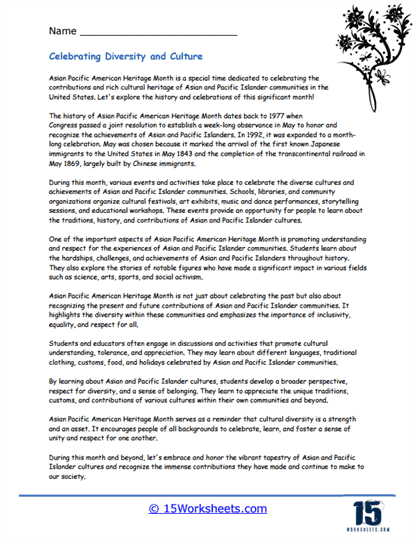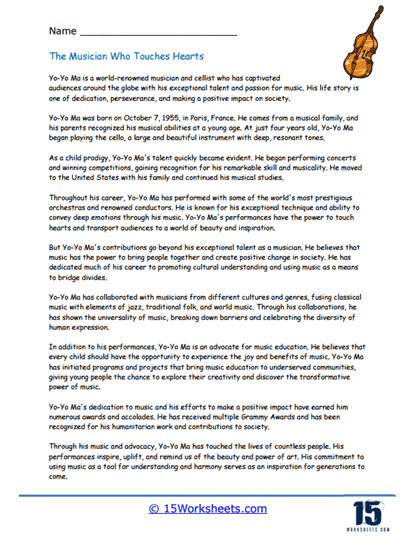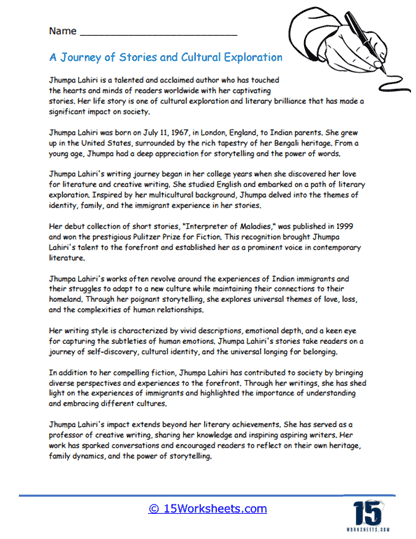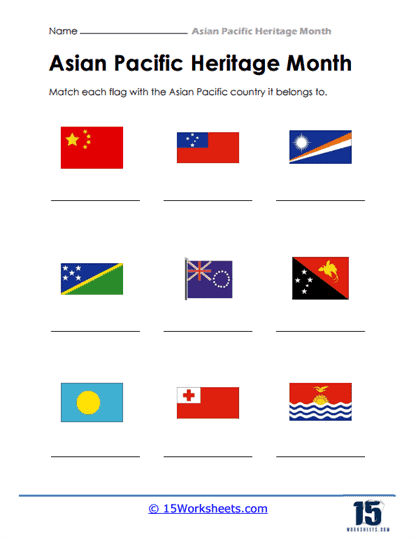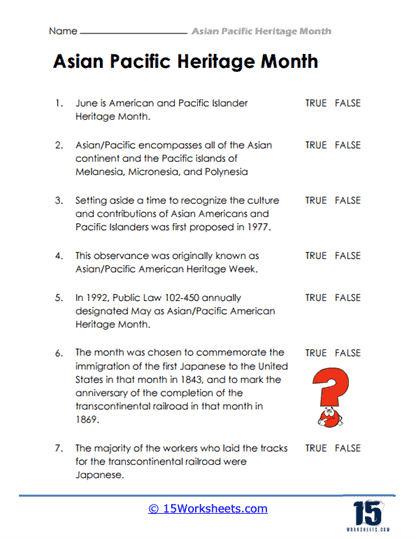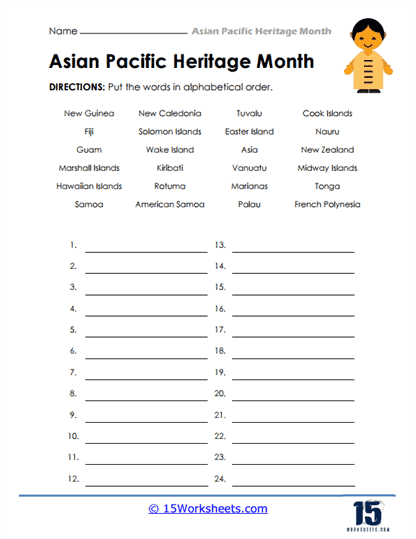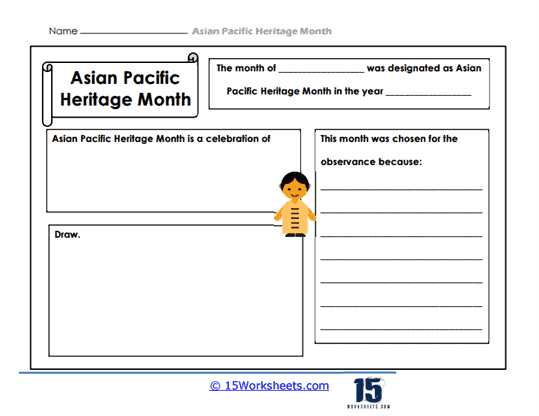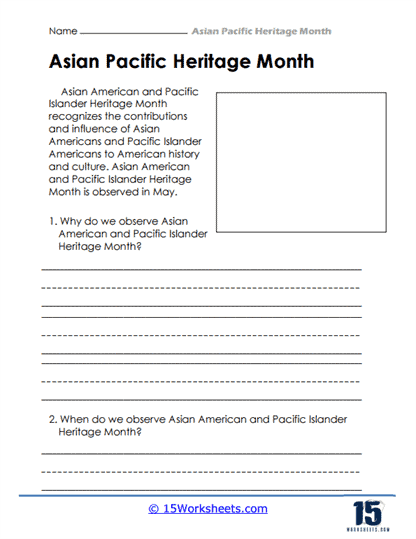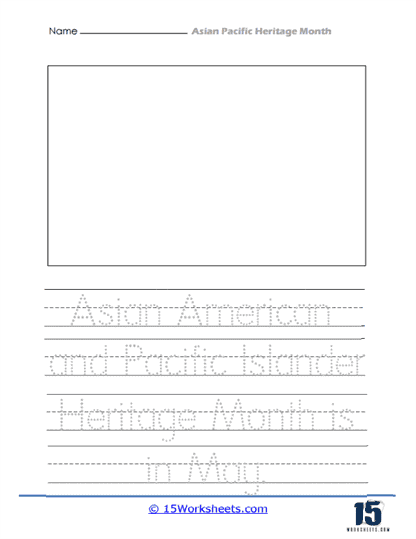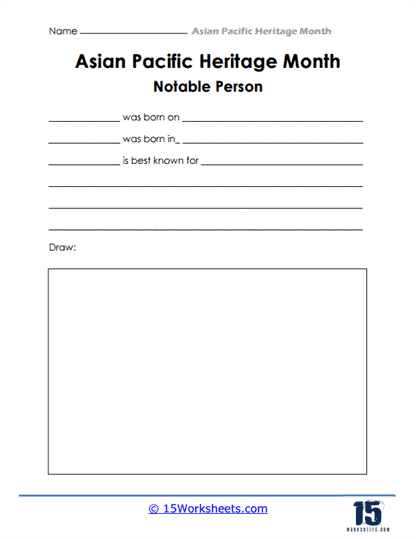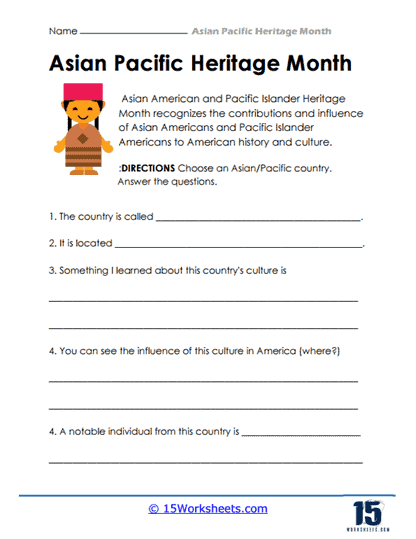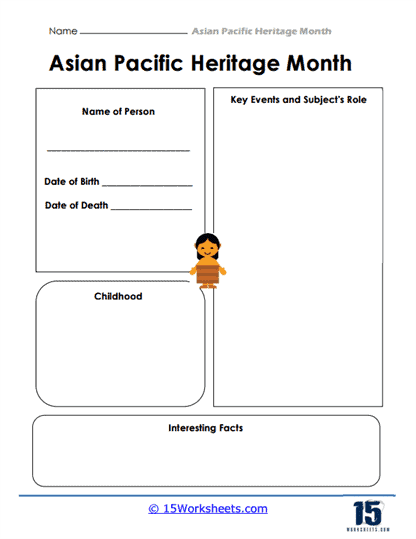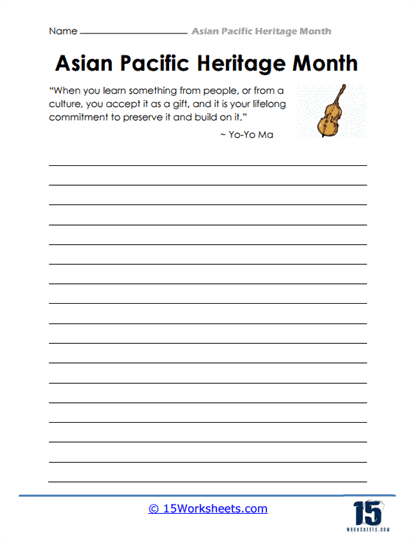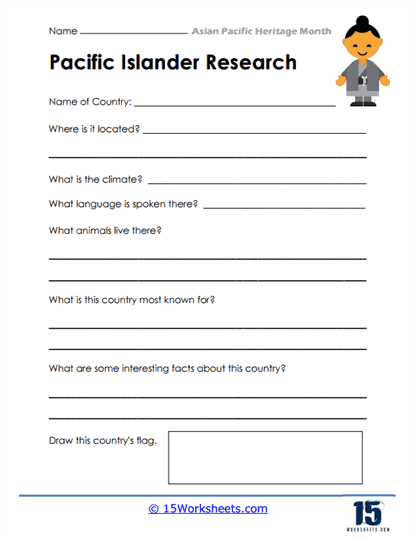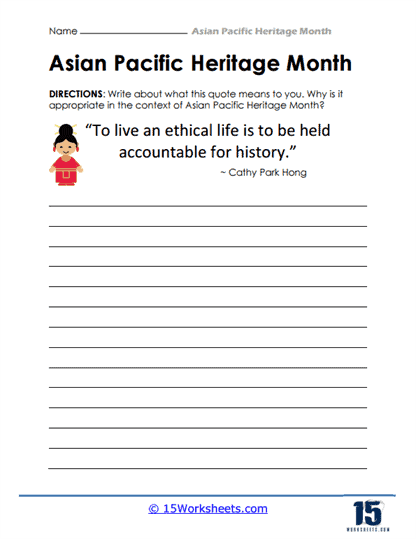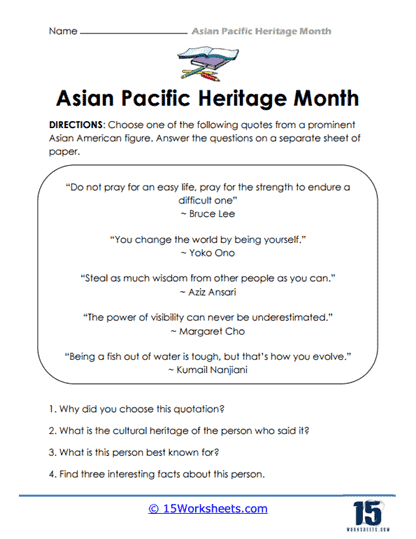Asian Pacific Heritage Month Worksheets
About These 15 Worksheets
Asian Pacific Heritage Month is observed in May each year in the United States, and it provides an opportunity to recognize the diverse cultures and experiences of people with Asian and Pacific Islander backgrounds. These worksheets aim to engage students, educators, and the broader community in learning about the rich and varied heritage of Asian and Pacific Islander Americans.
Here are some common elements found in Asian Pacific Heritage Month worksheets:
Notable Figures – Worksheets may feature profiles of influential Asian and Pacific Islander Americans, such as historical figures, artists, scientists, activists, and leaders, highlighting their achievements and contributions. Students may be encouraged to recognize and reflect on the contributions of Asian and Pacific Islander Americans in areas like science, technology, medicine, politics, sports, and entertainment.
Cultural Traditions – Students may learn about the diverse cultures, traditions, customs, and languages of Asian and Pacific Islander communities through interactive activities and illustrations. The worksheets cover significant historical events related to Asian and Pacific Islander Americans, such as immigration stories, the building of the transcontinental railroad, or the impact of Asian and Pacific Islander communities during World War II.
Geography and Flags – Some of the worksheets include maps and flags of different Asian and Pacific Islander countries to promote geographic awareness and understanding of the region’s diversity.
Diversity and Inclusion – These worksheets may emphasize the importance of embracing diversity, promoting cultural understanding, and fostering a sense of inclusion within society.
Celebrations and Festivals – Students might learn about traditional Asian and Pacific Islander festivals and celebrations, such as Lunar New Year, Diwali, Eid, and various Pacific Islander cultural events.
About This Celebration
Asian Pacific American Heritage Month, also referred to as Asian American and Pacific Islander Heritage Month, is celebrated in May to honor the history, contributions, and achievements of Asian Americans and Pacific Islanders (AAPI) in the United States. It’s a time dedicated to recognizing the challenges faced by these communities, their rich and diverse cultures, and their innumerable contributions to the arts, sciences, sports, commerce, and public service at the national, state, and local levels.
Why Do We Celebrate Asian Pacific American Heritage Month?
The celebration of Asian Pacific American Heritage Month is a testament to the importance of recognizing the diverse histories and cultures in America. It acknowledges the enduring contributions and achievements of Asian Americans and Pacific Islanders to the United States. It is also an opportunity to raise awareness about the various challenges faced by these communities, from language barriers and discrimination to disparities in health and income. By celebrating this month, we not only promote respect, appreciation, and understanding of the rich histories, cultures, and experiences of Asian Americans and Pacific Islanders, but also highlight their ongoing contributions and influence in America.
The History of Asian Pacific American Heritage Month
The roots of Asian Pacific American Heritage Month can be traced back to the bicentennial celebrations in 1976, when Jeanie Jew, a Capitol Hill staffer, noted the lack of recognition given to Asian Americans and Pacific Islanders in the U.S. She proposed the idea of a nationally recognized celebration, which resulted in Representatives Frank Horton and Norman Mineta introducing a resolution in 1977 to proclaim the first ten days of May as Asian-Pacific Heritage Week. Senators Daniel Inouye and Spark Matsunaga later introduced a similar bill in the Senate.
Although these initial resolutions were not passed, a similar resolution was reintroduced in 1978, and was signed into law by President Jimmy Carter on October 5, 1978, officially designating a week in May as Asian-Pacific American Heritage Week.
In 1990, President George H. W. Bush signed a bill into law to extend the week-long celebration to a month. Two years later, on May 14, 1992, the official designation of May as Asian-Pacific American Heritage Month was signed into law.
The month of May was specifically chosen for two reasons. First, to commemorate the arrival of the first known Japanese immigrant to the United States, a 14-year-old fisherman named Manjiro who was shipwrecked and rescued by an American whaling ship in May 1843. Second, to mark the anniversary of the completion of the transcontinental railroad on May 10, 1869. The majority of the workers who laid the tracks were Chinese immigrants.
Deep Facts about Asian Pacific American Heritage Month
Asian Pacific American Heritage Month celebrates a diverse tapestry of histories, cultures, languages, and experiences. It is a celebration that encourages exploration and learning about a multitude of Asian cultures, from the traditions of ancient civilizations to the contemporary experiences of Asian communities in the United States today.
In this context, it’s crucial to acknowledge the individual and collective contributions of Asian Americans and Pacific Islanders. This group includes a wide range of influential and inspiring figures like Dalip Singh Saund, the first Asian American elected to Congress; Ellison Onizuka, the first Asian American astronaut; Patsy Mink, the first woman of color and the first Asian American woman elected to Congress; and Yo-Yo Ma, a renowned cellist and a recipient of the Presidential Medal of Freedom, among countless others.
What Countries are Included in Asian Pacific American Heritage Month?
Asian Pacific American Heritage Month encompasses all of the Asian continent and the Pacific islands of Melanesia (New Guinea, New Caledonia, Vanuatu, Fiji, and the Solomon Islands), Micronesia (Marianas, Guam, Wake Island, Palau, Marshall Islands, Kiribati, Nauru, and the Federated States of Micronesia), and Polynesia (New Zealand, Hawaiian Islands, Rotuma, Midway Islands, Samoa, American Samoa, Tonga, Tuvalu, Cook Islands, French Polynesia, and Easter Island).
The term Asian Pacific American includes more than 50 ethnic groups, representing a vast array of languages, historical periods, religions, cuisines, and cultural practices. This group includes, but is not limited to, individuals of Chinese, Filipino, Indian, Vietnamese, Korean, Japanese, Hawaiian, and Pacific Islander descent.
Asian Pacific American Heritage Month is a time to recognize and celebrate the rich histories, diverse cultures, and notable contributions of Asian Americans and Pacific Islanders. It serves as a reminder of the trials and hardships they have overcome, the accomplishments they have achieved, and the invaluable role they continue to play in shaping the nation’s social, economic, and political landscape. It offers an opportunity to promote understanding, to challenge stereotypes, and to champion the voices, stories, and experiences of the AAPI community. It is a celebration of the past, a recognition of the present, and an anticipation of the future – a future that continues to be enriched and shaped by the diverse and dynamic experiences of Asian Americans and Pacific Islanders.

